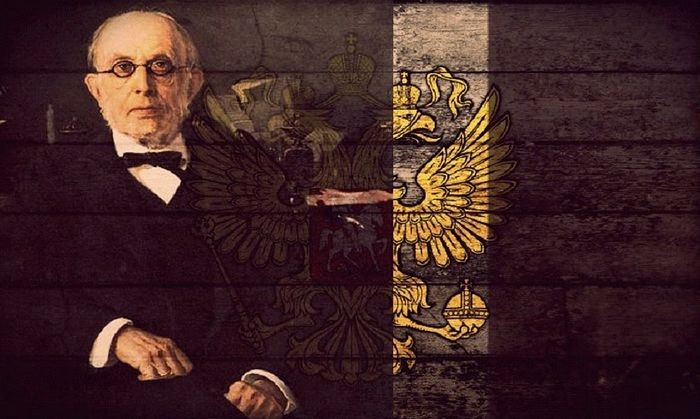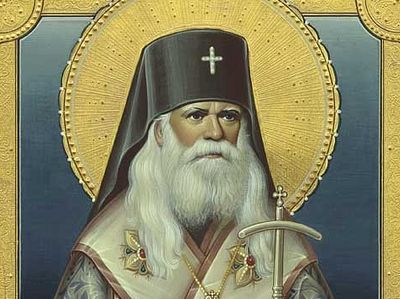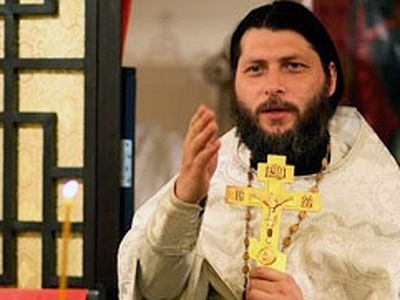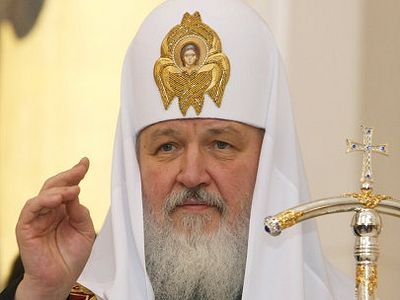Source: Royal Russia
February 12, 2016
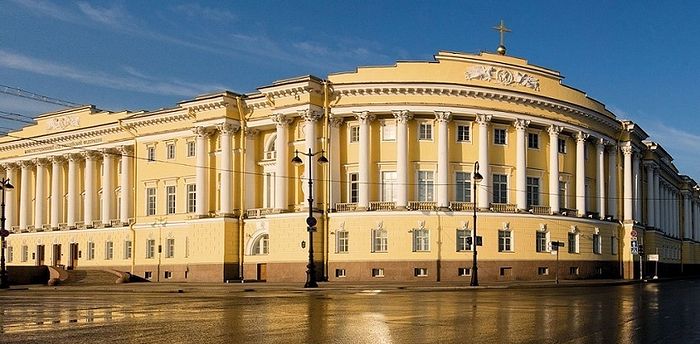 Headquarters of the Holy Synod of the Russian Empire in St. Petersburg from 1835 to 1917 and from 2009 to present day
Headquarters of the Holy Synod of the Russian Empire in St. Petersburg from 1835 to 1917 and from 2009 to present day
By May 2016, the Boris Yeltsin Presidential Library in St. Petersburg will have created a collection titled "Holy Synod in the History of the Russian State", which will include more than 1,000 units.
The activities of one of the two highest authorities of the Russian Empire, will show the impact of the Holy Synod not only on the spiritual but also on the social, and political developments of the country. This project is quite important for the Presidential Library because it is located in a historic complex, which housed the meetings of the Holy Synod from 1835 to 1917. In 2009, when the library opened, the Holy Synod returned to St. Petersburg. Two tablets were placed on the facade of the building at 3, Senate Square: the Boris Yeltsin Presidential Library and the Holy Synod of the Russian Orthodox Church.
Through its project the first national electronic library will show the diversity of development of this authority before the revolution, digitize the books and archival files from the library of the Holy Synod, which after the revolution were scattered around the country and abroad, collect the outstanding publications of the Synodal Press, and the history of life of its Chief Procurators.
By now, a number of editions have been digitized. Work is ongoing in cooperation with the Russian State Historical Archive, Tobolsk Historical and Architectural Museum, St. Petersburg State University, and the Moscow Theological Academy and Seminary.
The library’s comprehensive website already makes available digitized copies of documents from the Holy Synod archive: certificates of birth and death of famous compatriots, register of visits of important guests, legislative activities of the Holy Synod, reports of the Chief Procurator Konstantin Petrovich Pobedonostsev (1827-1907), codes of decrees, photos and other documents. The Presidential Library collection also contains digital copies of the "Church Bulletin issued under the Holy Governing Synod." The edition was published from 1888 twice a month and was the official press organ of the Synod. The journal was supplemented by a literary, journalistic piece, "Additions to the church Bulletin", which included selected patristic works, sermons of modern clergymen of the Russian Church, theological articles and Church-historical notes.
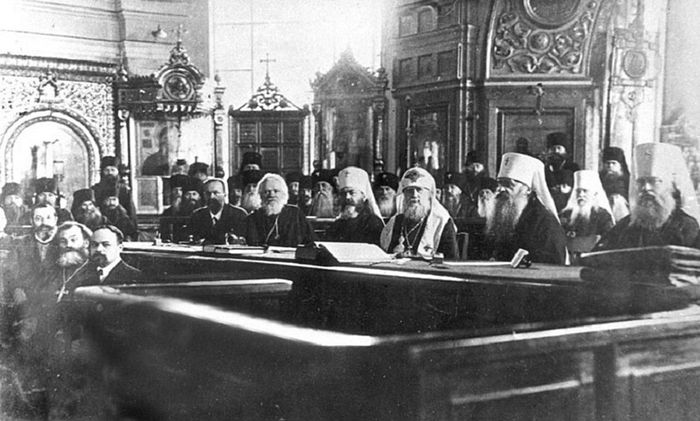 The Most Holy Governing Synod, highest authority of the Russian Orthodox Church in 1917, immediately after the election of the newly elected Patriarch Tikhon (seated third from right). Patriarch Tikhon (1865-1925) openly condemned the killing of the tsar’s family in 1918, and pretested against violent attacks by the Bolsheviks on the Church. Patriarch Tikhon was canonized a saint by the Synod of Bishops of the Russian Orthodox Church Outside of Russia (ROCOR) on October 19/November 1, 1981. He was later glorified by the Moscow Patriarchate during the Bishop’s Council of October 9-11, 1989.
The Most Holy Governing Synod, highest authority of the Russian Orthodox Church in 1917, immediately after the election of the newly elected Patriarch Tikhon (seated third from right). Patriarch Tikhon (1865-1925) openly condemned the killing of the tsar’s family in 1918, and pretested against violent attacks by the Bolsheviks on the Church. Patriarch Tikhon was canonized a saint by the Synod of Bishops of the Russian Orthodox Church Outside of Russia (ROCOR) on October 19/November 1, 1981. He was later glorified by the Moscow Patriarchate during the Bishop’s Council of October 9-11, 1989.
The history of the Holy Synod began in the 18th century with the Church reforms conducted by Emperor Peter I. In 1723, the newly formed department was recognized by Constantinople Patriarch Jeremiah III as an "equally patriarchal brother in Christ." From that moment began, in fact, a new chapter in the history of Russian Church: if with autocephaly of Constantinople in appointing metropolitans (and, of course, the patriarch afterwards) temporal power, having taking control over the ecclesiastical regiment hierarchically, was still looking back at the authority of pastors and bishops, now the "anointed power" both de jure and de facto took over the control of the "anointing power." The key figure in this scheme was the "sovereign's eye" - the Chief Procurator of the Synod.
In addition to its "direct" spiritual duties, the Holy Synod also performed a number of functions that depended primarily on the ambitions and abilities of the Chief Procurator. For example, Empress Catherine II, admiring the collection of ancient manuscripts of Musin-Pushkin appointed the latter chief procurator of the Holy Synod, instructing the agency to continue collecting ancient manuscripts. In just one year, the dioceses collected over one hundred books.
In the 18th century the figure of Chief Procurator rose continually. For example, Emperor Nicholas I already spoke of himself as of "the head of the Church." However, the Chief Procurator became particularly influential by 1880, when the post was taken by Konstantin Petrovich Pobedonostsev - tutor of the royal family and of the heir to the throne, in particular.
The personality of Pobedonostsev was deep, complex and contradictory. In his youth, he wrote a paper on the liberalization of political system of the empire, while in the "Moscow collection" he inveighed against "false constitutional views." He was close friend of the Russian writer Fyodor Dostoyevsky, whom he established friendly relations with. At the same time, his hostility to Leo Tolstoy was growing (later the chief procurator supported the excommunication from the church of the latter).
Having digitized not only books about the time of Pobedonostsev, but also his correspondence, reports and other materials, the Presidential Library will study the personalities of other chief procurators and members of the Holy Synod. During this work it expects many historical discoveries and findings.
